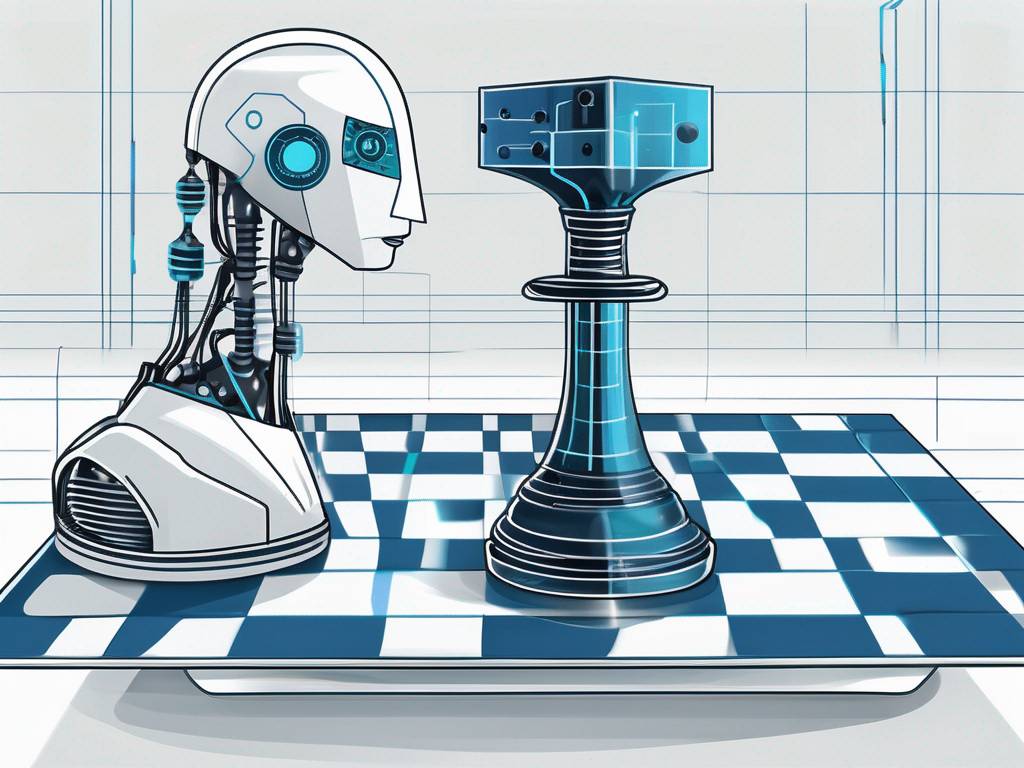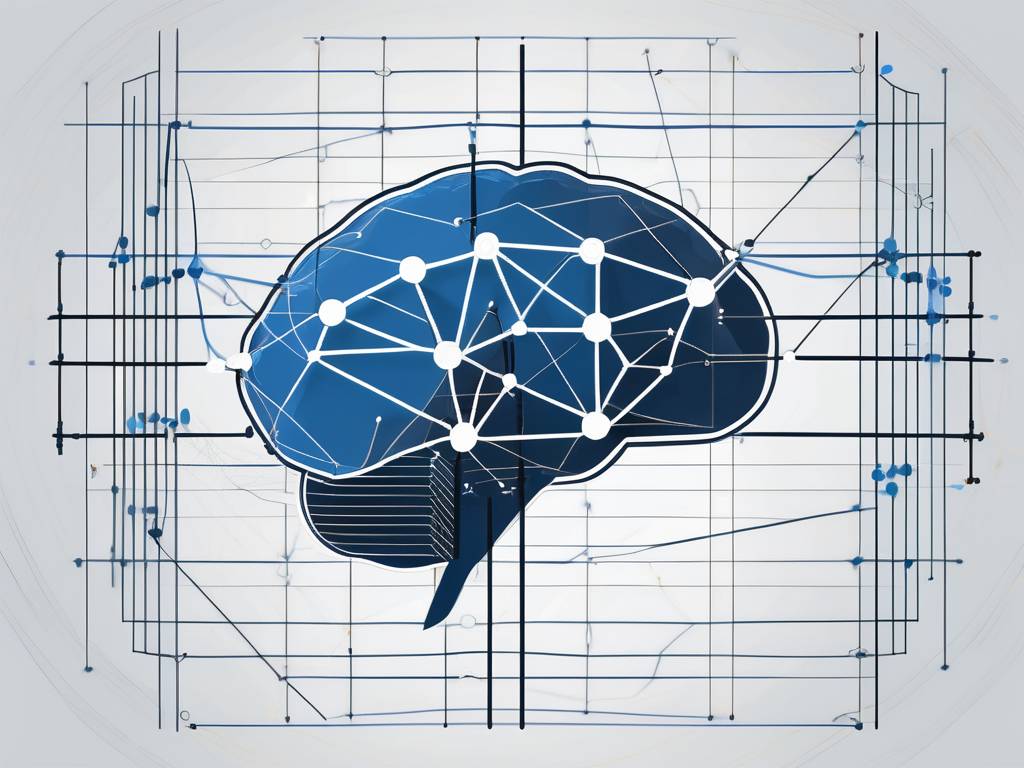Reinforcement Learning: Machine Learning Explained
Reinforcement Learning (RL) is a subfield of Machine Learning (ML) that is focused on the development of intelligent systems capable of learning from their interactions with the environment. This learning paradigm allows an agent to learn optimal behaviors through trial-and-error experiences, with the aim of maximizing a cumulative reward. The fundamental idea behind RL is that an agent will learn to perform actions that lead to states with the highest expected reward.
Reinforcement Learning is distinguished from other types of Machine Learning by its focus on the discovery of optimal actions, as opposed to the prediction of outcomes. While Supervised Learning algorithms learn from labeled examples provided by a knowledgeable external supervisor, and Unsupervised Learning algorithms seek to find hidden structures in unlabeled data, Reinforcement Learning algorithms learn from the consequences of their own actions, without requiring explicit supervision.
Basic Concepts in Reinforcement Learning
The basic concepts in Reinforcement Learning include the notions of an agent, an environment, states, actions, rewards, and policies. An agent is an entity that interacts with an environment by performing actions and receiving feedback in the form of rewards. The environment represents the context in which the agent operates, and it responds to the agent’s actions by providing new states and rewards. States are the circumstances or conditions that the agent finds itself in, and actions are the choices that the agent can make. Rewards are the feedback that the agent receives after performing an action, and a policy is a strategy that the agent follows to select actions based on states.
Another important concept in Reinforcement Learning is the value function, which is a prediction of future rewards. The value function is used by the agent to evaluate the desirability of states and actions. There are two types of value functions: the state-value function, which estimates the expected return from a given state, and the action-value function, which estimates the expected return from a given state-action pair. The goal of Reinforcement Learning is to find a policy that maximizes the expected return from each state, which is equivalent to finding a policy that maximizes the value function.
Agent
The agent in Reinforcement Learning is the decision-maker or learner. The agent interacts with the environment by performing actions, and it learns from the feedback it receives in the form of rewards. The agent’s goal is to learn a policy that maximizes the cumulative reward over time. The agent’s behavior is determined by its policy, which is a mapping from states to actions. The policy can be deterministic, meaning that it specifies a single action for each state, or stochastic, meaning that it specifies a probability distribution over actions for each state.
The agent’s learning process involves updating its policy based on the feedback it receives. This feedback comes in the form of rewards, which are numerical values that the agent receives after performing an action. The agent uses these rewards to estimate the value of states and actions, and it updates its policy to favor actions that lead to states with higher estimated values. The agent’s learning process is guided by the principle of trial-and-error, which means that it learns from its mistakes and successes by adjusting its policy in response to the outcomes of its actions.
Environment
The environment in Reinforcement Learning is the context in which the agent operates. The environment responds to the agent’s actions by providing new states and rewards. The environment is typically modeled as a Markov Decision Process (MDP), which is a mathematical framework for modeling decision-making situations where the outcomes are partly random and partly under the control of the agent. In an MDP, the probability of transitioning to a new state and receiving a reward depends only on the current state and action, and not on the history of past states and actions.
The environment’s response to the agent’s actions is determined by the transition function and the reward function. The transition function specifies the probability of transitioning to a new state given the current state and action, and the reward function specifies the expected reward for each state-action pair. The agent’s goal is to learn a policy that maximizes the expected cumulative reward over time, which involves finding actions that lead to states with high expected rewards and low expected costs.
Reinforcement Learning Algorithms
Reinforcement Learning algorithms are methods for learning optimal policies. These algorithms can be classified into three main categories: value-based methods, policy-based methods, and actor-critic methods. Value-based methods, such as Q-Learning and Value Iteration, learn an optimal value function and derive an optimal policy from it. Policy-based methods, such as Policy Gradient and REINFORCE, directly learn an optimal policy without using a value function. Actor-critic methods, such as Advantage Actor-Critic (A2C) and Proximal Policy Optimization (PPO), combine value-based and policy-based approaches by maintaining both a value function (the critic) and a policy (the actor).
Reinforcement Learning algorithms typically involve a learning process that iteratively updates the agent’s policy based on the feedback it receives. This learning process is guided by the principle of temporal difference (TD) learning, which is a combination of Monte Carlo methods and dynamic programming methods. TD learning methods update the value function based on the difference between the estimated value of the current state and the estimated value of the next state, which is called the temporal difference error. The TD error is used to adjust the value function and the policy in the direction of increasing expected rewards.
Value-Based Methods
Value-based methods in Reinforcement Learning learn an optimal value function and derive an optimal policy from it. The value function is a prediction of future rewards, and it is used by the agent to evaluate the desirability of states and actions. The goal of value-based methods is to find a policy that maximizes the value function, which is equivalent to finding a policy that maximizes the expected return from each state.
One of the most popular value-based methods is Q-Learning, which is a model-free algorithm that learns an action-value function. The action-value function, also known as the Q-function, estimates the expected return from a given state-action pair. Q-Learning updates the Q-function based on the TD error, which is the difference between the estimated value of the current state-action pair and the estimated value of the next state-action pair. The policy is derived from the Q-function by choosing the action that has the highest estimated value in each state.
Policy-Based Methods
Policy-based methods in Reinforcement Learning directly learn an optimal policy without using a value function. The policy is a mapping from states to actions, and it can be deterministic or stochastic. The goal of policy-based methods is to find a policy that maximizes the expected return from each state, which involves optimizing the policy with respect to the expected rewards.
One of the most popular policy-based methods is Policy Gradient, which is a model-free algorithm that learns a policy by following the gradient of the expected return. Policy Gradient methods update the policy in the direction of increasing expected rewards, which is determined by the gradient of the expected return with respect to the policy parameters. The policy is represented as a parameterized function, and the parameters are adjusted based on the policy gradient.
Applications of Reinforcement Learning
Reinforcement Learning has a wide range of applications in various fields, including robotics, game playing, recommendation systems, resource management, and autonomous vehicles. In robotics, Reinforcement Learning can be used to train robots to perform complex tasks, such as grasping objects, walking, or flying. In game playing, Reinforcement Learning has been used to develop agents that can play games at a superhuman level, such as AlphaGo, which defeated the world champion in the game of Go.
In recommendation systems, Reinforcement Learning can be used to personalize recommendations based on the user’s behavior. The recommendation problem can be formulated as a Reinforcement Learning problem, where the agent is the recommender system, the actions are the items to recommend, the states are the user’s behavior and the context, and the rewards are the user’s feedback on the recommendations. In resource management, Reinforcement Learning can be used to optimize the allocation of resources, such as bandwidth in communication networks or power in data centers.
Reinforcement Learning in Robotics
Reinforcement Learning in robotics is a research area that focuses on the application of Reinforcement Learning methods to train robots to perform complex tasks. The goal is to develop robots that can learn from their interactions with the environment, and adapt their behavior based on the feedback they receive. This approach has the potential to overcome the limitations of traditional robotics methods, which rely on hand-crafted controllers and pre-programmed behaviors.
One of the main challenges in applying Reinforcement Learning to robotics is the high dimensionality of the state and action spaces. Robots typically have many degrees of freedom, which results in a large state space and a large action space. This makes the learning problem more difficult, as the agent needs to explore a larger space to find an optimal policy. Despite these challenges, Reinforcement Learning has been successfully applied to train robots to perform tasks such as grasping objects, walking, and flying.
Reinforcement Learning in Game Playing
Reinforcement Learning in game playing is a research area that focuses on the application of Reinforcement Learning methods to develop agents that can play games at a high level. The goal is to develop agents that can learn from their interactions with the game environment, and adapt their behavior based on the feedback they receive. This approach has the potential to overcome the limitations of traditional game playing methods, which rely on hand-crafted heuristics and pre-programmed strategies.
One of the main challenges in applying Reinforcement Learning to game playing is the complexity of the game environment. Games typically have complex rules and dynamics, which results in a large state space and a large action space. This makes the learning problem more difficult, as the agent needs to explore a larger space to find an optimal policy. Despite these challenges, Reinforcement Learning has been successfully applied to develop agents that can play games at a superhuman level, such as AlphaGo, which defeated the world champion in the game of Go.
Challenges & Future Directions in Reinforcement Learning
Despite the success of Reinforcement Learning in various applications, there are still many challenges to be addressed and many directions for future research. Some of the main challenges include the exploration-exploitation trade-off, the credit assignment problem, the curse of dimensionality, and the sample efficiency problem. The exploration-exploitation trade-off refers to the dilemma that the agent faces when deciding whether to explore new actions or exploit known actions. The credit assignment problem refers to the difficulty of determining which actions are responsible for the observed rewards. The curse of dimensionality refers to the exponential increase in the complexity of the learning problem with the increase in the dimensionality of the state and action spaces. The sample efficiency problem refers to the large amount of data required to learn an optimal policy.
Future directions in Reinforcement Learning research include the development of new algorithms that can handle large state and action spaces, the integration of Reinforcement Learning with other Machine Learning methods, the application of Reinforcement Learning to new domains, and the investigation of theoretical aspects of Reinforcement Learning. There is also a growing interest in understanding the connections between Reinforcement Learning and human and animal learning, with the aim of developing more biologically plausible Reinforcement Learning algorithms.

 hello@westlink.com
hello@westlink.com  (866) 954-6533
(866) 954-6533  700 N Colorado Blvd,
700 N Colorado Blvd,







Comments